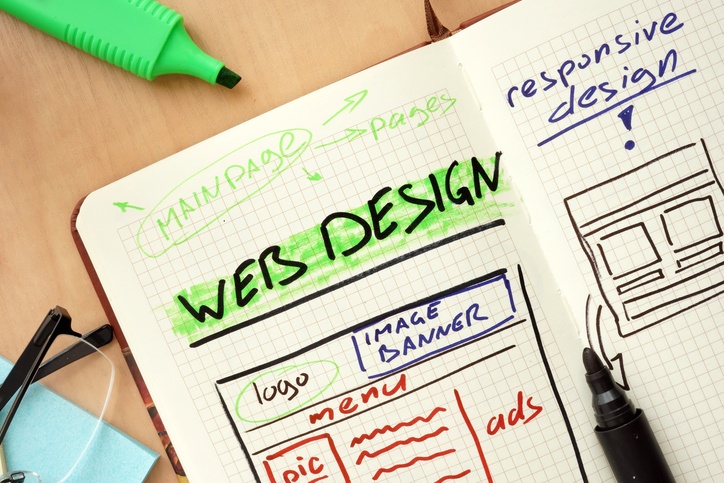
Website Redesign: Stock Imagery vs. Custom Photography
July 25, 2017
The photographs used in a website redesign are important to the overall effectiveness and user experience of the site. Captivating visuals represent your company and better communicate your brand to the customer. Marketers know this—according to one report, 37 percent of them say visuals are the most important form of content, trailing only blogging at 38 percent. Dynamic pictures on your webpages draw visitors in. Lackluster photos, or no photos at all, may bore them enough to click away.
With this clear strategy in mind, another decision must be made: how to secure the imagery you plan to use. Many questions emerge:
- “Where do I find a professional photographer?”
- “How expensive will it be?”
- “Should I download stock photos?”
- “I just bought the latest iPhone; maybe I should shoot the pictures myself?”
Even photos that best represent your brand won’t offer an impact if they are blurry or look like pictures included in a cheap frame you buy from the store. You could hire a professional to produce these important images, or you can try it on your own. Or you could go the stock photo route. Here is a look at the advantages and disadvantages of custom photography—whether it’s professional or DIY—and stock imagery:
Professional Photography
Obviously, this is the most expensive option—and, frankly, the option for which you don’t want to go cheap, lest you get what you pay for. The benefits of a professional photographer can go a long way in terms of connecting with your audience. You want your website imagery to deliver the most positive and beneficial portrayal of your company possible; an expert can help you achieve that goal.
For starters, a professional photographer will account for lighting and composition—things your coworker with an iPhone might not consider. Professionals also can better focus on staging the subject involved so that pictures look less posed and more authentic.
A professional photographer will also take pictures of your actual business and employees—everything that makes your company unique. This might include the office environment, fellow employees, and the customers using your product. Such a personal touch builds a better relationship with future customers visiting your website.
Hiring a professional is an excellent strategy if you plan on highlighting the entire staff, say on an “About” or company page, so that photos are consistent and appealing. Moreover, if you are selling a product or a service, a professional can showcase pictures in the product or service’s most realistic form so that customers won’t be fooled. Again, authenticity is important, and the best photographers do not disappoint.
Do-It-Yourself Photography
Because of cost or other factors, you may want to give the DIY approach a whirl. You don’t always need fancy lighting or expensive camera equipment to take a great picture for your website redesign. Many high-quality smartphones and DSLR cameras are on the market that don’t require experts to use. However, you should take some precautions:
- Ensure the photos are high-quality: You must avoid blurry imagery or someone’s thumb in the picture—anything that makes your company look unprofessional or tarnishes the brand.
- Get the right lighting: More light leads to more clarity. Shooting photos in the early afternoon should give you the best results.
- Take photos that people can relate to: Make sure the pictures look natural—no catalog poses. Create visual interest with angle shots and close-ups.
Stock Photography
If professional photography isn’t an option and you are pretty sure your thumb would be in every picture, the next best choice is stock photos, available on a variety of websites. Unfortunately, the internet is riddled with the classic, cheesy shots of overly posed “professionals” smiling directly at the camera.
The big problem with stock photography is company perception. As a user, if I come to your website and just see stock photos, do I even know this is a real company? Are there real people working behind the scenes? This lack of a personal connection is a real drawback, as is the time-consuming research on stock photo websites to find quality images that properly represent the company. It’s a pain, but it can be done well by following best practices. Here are some tips for choosing the right photos and avoiding being too generic:
- Make sure that stock photos help communicate your business and your voice. Ask yourself: Does this image bring value to the page? If you remove or replace the photo, will the page have the same feel?
- You can manipulate and customize stock photos to be your own. When I use stock photography, I like to crop images to alter the composition, add headlines with interesting typography, and change background colors. That said, be sure to check with the license agreement to confirm that you may edit stock photos.
- Choose images of people looking natural; avoid pictures of subjects smiling directly into the camera.
- Realize that many other websites—including competitors—might be using the same images.
- Good premium websites to find stock photos include Getty Images and Shutterstock. For free images, StockSnap offers thousands of beautiful photos that require no attribution.
Whatever option you choose for images, always consider how photos on your website appeal to your personas, enhance user experience, and promote your brand. If you are unsure on how to proceed, website redesign specialists can help select pictures and create a look that will impress visitors and customers alike.
What kind of photos do you currently use on your website?

About the author
Amanda Singleton was formerly a Senior Designer at SmartBug Media. With over 8+ years experience in the field, she has an innate sense for clean design and is a strong advocate for the user. Read more articles by Amanda Singleton.










